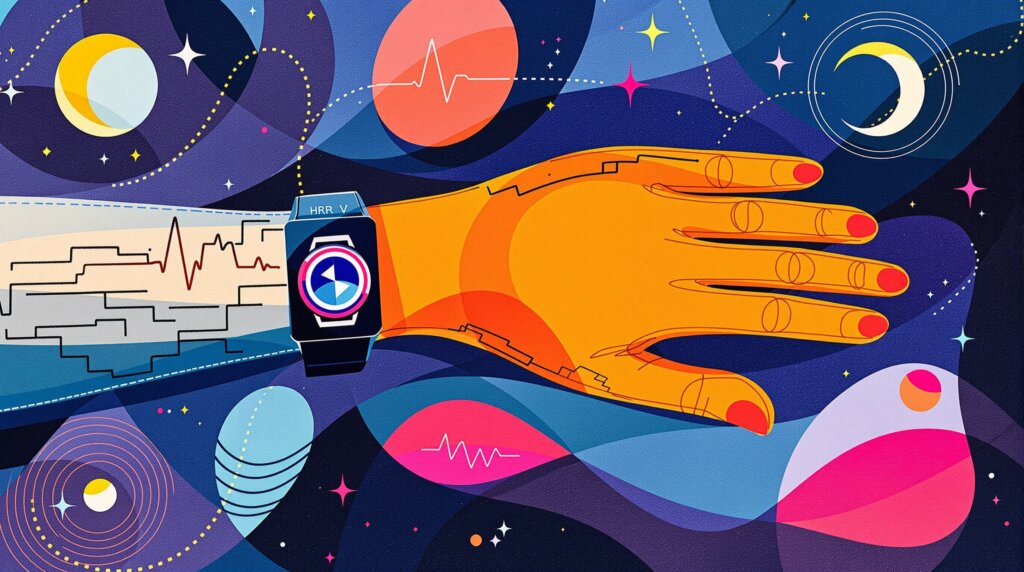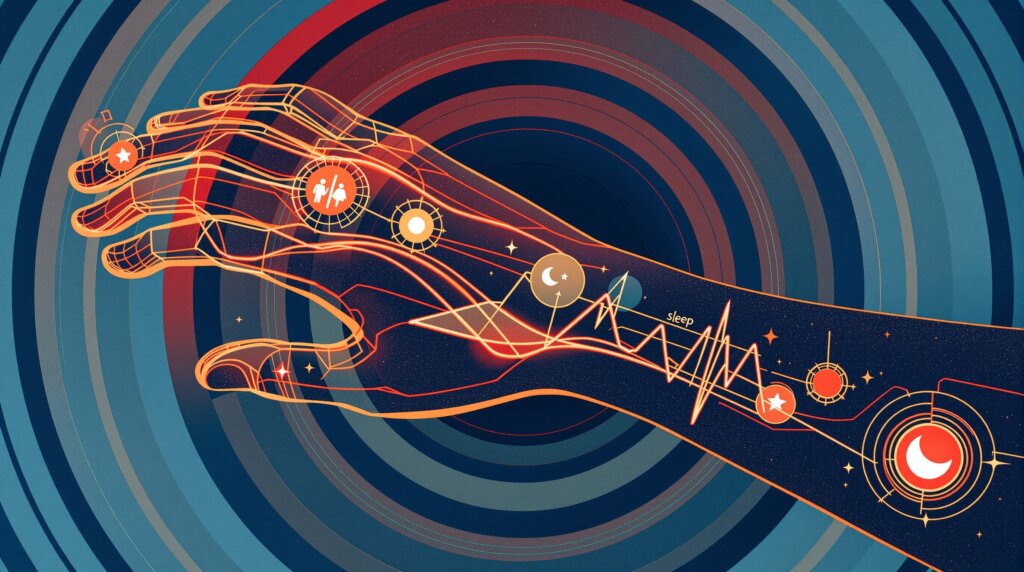The Three Pillars of Modern Health Monitoring
Navigating the Wearable Device Landscape
The world of wearable health technology has evolved into three distinct categories, each offering unique advantages for monitoring our wellbeing. Fitness bands, smart rings, and smartwatches have become the cornerstone devices for those seeking to understand their health metrics better. While all three promise accurate health tracking, the reality is more nuanced—each excels in different areas while facing specific limitations.
The growing demand for precise health monitoring has driven significant innovation across these form factors. However, not all devices are created equal when it comes to accuracy. Understanding where each type of wearable tends to perform best can help you make an informed decision about which device aligns with your health monitoring priorities and lifestyle needs.

Understanding Form Factor Fundamentals
The Distinct Advantages of Each Design
Fitness bands represent the middle ground in wearable technology, typically weighing between 15-25 grams and focusing primarily on activity tracking. These devices often provide excellent value for general fitness monitoring, though they may lack some of the advanced sensors found in premium alternatives. Their lightweight design makes them comfortable for extended wear, but the trade-off sometimes comes in the form of limited battery life or reduced sensor accuracy.
Smart rings offer perhaps the most discreet monitoring experience, weighing just 4-8 grams and sitting comfortably on your finger. This placement provides unique advantages for certain types of health monitoring, particularly during rest periods when hand movement is minimal. However, rings face challenges during active periods when hand gestures and movements can interfere with sensor readings.
Smartwatches deliver the most comprehensive feature set, often including large displays, GPS capabilities, and multiple sensors. While they tend to be bulkier and may feel less comfortable during sleep, their stable wrist positioning and larger sensor arrays can provide more reliable data during physical activities. The challenge lies in balancing functionality with comfort, as some users find them too intrusive for 24/7 wear.
The Science Behind Sensor Accuracy
How Technology Translates to Reliable Data
The accuracy of any wearable device fundamentally depends on its sensor technology and placement. Photoplethysmography (PPG) sensors, which measure heart rate by detecting blood volume changes through light emission, form the backbone of most health tracking features. However, these sensors don’t perform equally well across all device types or situations.
Finger placement, as found in smart rings, often provides superior signal quality during rest periods due to the rich blood flow in fingertips and the relatively stable positioning. This makes rings particularly effective for resting heart rate and overnight monitoring. However, this advantage can quickly disappear during physical activity when hand movements create motion artifacts that interfere with sensor readings.
Wrist-based sensors in bands and watches face different challenges. While they may struggle with accuracy during rest due to reduced blood flow in the wrist area, they often maintain better stability during movement. Environmental factors like skin temperature, device fit, and even ambient light can significantly impact sensor performance across all device types.
Accelerometers and gyroscopes, which track movement and orientation, also vary in effectiveness based on placement. Wrist-based devices typically capture arm movements more reliably, while finger-worn devices may overcomplicate step counting due to hand gestures that don’t represent actual steps.
Heart Rate Monitoring: Where Placement Matters Most
Resting vs. Active Accuracy Patterns
When it comes to heart rate monitoring, the accuracy story varies dramatically between rest and activity periods. Smart rings consistently demonstrate superior performance for resting heart rate measurements, often achieving medical-grade accuracy due to the steady skin contact and rich blood supply in the fingertip. This makes them particularly valuable for tracking heart rate variability (HRV) and overnight heart rate patterns.
However, during exercise or active periods, the accuracy advantage often shifts to wrist-based devices. Smartwatches, with their multiple sensors and more stable positioning during arm movement, tend to provide more reliable heart rate data during workouts. The larger sensor area and advanced algorithms can better compensate for motion artifacts that plague smaller devices.
Fitness bands generally fall somewhere between rings and watches in terms of heart rate accuracy, though this varies significantly based on the quality of the sensors and algorithms used. Premium bands with medical-grade sensors can approach watch-level accuracy, while budget options may struggle with consistency across different activity levels.
Activity Tracking: Steps, Distance, and Movement
The GPS and Motion Sensor Advantage
Step counting accuracy reveals interesting patterns across device types. Smartwatches often provide the most accurate step and distance tracking, particularly when equipped with GPS capabilities. Their wrist positioning captures natural arm swing during walking, and GPS integration eliminates much of the guesswork in distance calculations.
Smart rings face unique challenges in step counting, as they may register hand movements that aren’t related to actual steps. Cooking, typing, or gesturing can all contribute to inflated step counts. However, advanced algorithms in premium rings are increasingly sophisticated at filtering out these false positives.
Fitness bands typically offer reliable step counting, though distance accuracy may suffer without GPS integration. Many bands rely on stride length estimates, which can be unreliable for users with unusual gait patterns or during activities like hiking on varied terrain.
Sleep Tracking: The Ring’s Domain
Comfort Meets Accuracy in Overnight Monitoring
Sleep tracking represents one area where smart rings truly excel. The combination of minimal sleep disruption, excellent skin contact, and reduced motion artifacts makes finger-worn devices particularly effective for monitoring sleep stages, resting heart rate, and recovery metrics. The lightweight design means users are more likely to wear them consistently, leading to better long-term data quality.
Smartwatches can provide detailed sleep analysis, but comfort becomes a significant factor. Many users find watches too bulky or uncomfortable for overnight wear, leading to inconsistent data collection. When worn consistently, however, watches can offer additional insights through features like blood oxygen monitoring during sleep.
Fitness bands often strike a reasonable balance between comfort and functionality for sleep tracking, though they may not achieve the same level of accuracy as dedicated sleep-focused devices.
Real-World Factors That Impact Performance
Beyond the Lab: Practical Accuracy Considerations
Device accuracy in real-world conditions often differs significantly from laboratory testing. Proper fit is crucial—loose devices of any type will struggle with sensor accuracy, while overly tight devices can restrict blood flow and skew readings. Cold skin temperatures can reduce sensor effectiveness across all device types, making winter outdoor activities particularly challenging for accurate monitoring.
User behavior also plays a significant role. Rapid arm movements during activities like tennis or boxing can overwhelm motion compensation algorithms, particularly in rings where the motion artifacts are more pronounced. Even simple activities like carrying groceries or pushing a stroller can impact accuracy differently across device types.
Battery life considerations shouldn’t be overlooked, as declining battery performance can affect sensor accuracy. Devices with longer battery life, such as those offering 10-day operation, tend to maintain more consistent performance over time.
Choosing Your Health Monitoring Companion
Matching Device Strengths to Personal Priorities
The choice between bands, rings, and watches ultimately depends on your primary health monitoring goals. If sleep quality, recovery metrics, and resting health indicators are your priorities, a smart ring often provides the best combination of accuracy and comfort. The blēo ring, for instance, focuses specifically on these longevity signals with medical-grade sensors while maintaining the discrete form factor that encourages consistent wear.
For active individuals who prioritize workout tracking, GPS accuracy, and comprehensive activity monitoring, smartwatches typically offer the most reliable solution during exercise periods. Their larger sensor arrays and stable positioning during arm movement provide advantages that smaller devices sometimes can’t match.
Fitness bands serve as an excellent middle ground, particularly for users who want reliable general health monitoring without the bulk of a smartwatch or the limitations of a ring during active periods. The blēo band exemplifies this approach, offering medical-grade accuracy in a lightweight, accessible format that balances functionality with comfort.
The Accuracy Verdict
No single device type dominates across all health monitoring scenarios. Smart rings excel in sleep and recovery tracking, smartwatches lead in active monitoring and comprehensive features, while fitness bands offer versatile performance across multiple use cases. The key is understanding that accuracy isn’t absolute—it’s contextual, depending on what you’re measuring, when you’re measuring it, and how consistently you wear your chosen device.
Rather than seeking the “most accurate” device overall, focus on finding the one that excels in the health metrics most important to your longevity goals. The best wearable is ultimately the one you’ll wear consistently, as sporadic usage undermines even the most sophisticated sensors. Choose based on your lifestyle, comfort preferences, and the specific health insights that will most effectively guide your journey toward better wellbeing.
Frequently Asked Questions
Which is more accurate for measuring heart rate: a band, a ring, or a watch?
Can a ring or band detect atrial fibrillation (AFib) like some smartwatches do?
Are sleep tracking results similar across rings, bands, and watches?
How does where a device sits on the body affect health data accuracy?
Which should I buy for long-term health monitoring: ring, band, or watch?



